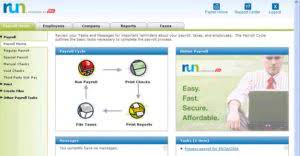Unearned Revenue 101: Key Insights for Your Business

According to GAAP, revenue can only be recorded after it has been earned by fulfilling customer obligations. Deferred revenue, also called unearned revenue, is money a company receives upfront for goods or services it hasn’t delivered yet. It’s a core concept in accrual accounting, where revenue is recognized when earned, not necessarily when payments are received. Companies can’t record unearned revenues as sales because of the accruals concept of accounting. For example, unearned revenues may include rents received by a company or business for future periods or customer advances to book future sales. Once goods or services have been rendered and a customer has received what they paid for, the business will need to revise the previous journal entry with another double-entry.
- However, in cases where a company receives money for sales that it expects to make after a year, it can also classify unearned revenues as non-current liabilities.
- Learn how to build, read, and use financial statements for your business so you can make more informed decisions.
- If the contractor received full payment for the work ahead of the job getting started, they would then record the unearned revenue as $5,000 under the credit category on the balance sheet.
- This journal entry illustrates that your business has received cash for its service that is earned on credit and considered a prepayment for future goods or services rendered.
- Unearned revenue is an essential concept in accounting, as it impacts the financial statements of businesses that deal with prepayments, subscriptions, or other advances from customers.
- A SaaS (software as a service) business that collects an annual subscription fee up front hasn’t done the hard work of retaining that business all year round.
- Unearned revenue consists of any advance payments received from customers for products or services that the company has yet to deliver or perform.
Unearned Revenue Journal Entries
In fiscal year 2024, Adobe generated $20.52 billion in revenue from subscriptions. Many of its customers typically pay upfront for annual access to services like Adobe Creative Cloud, resulting in significant deferred revenue. When customers prepay premiums—like an annual auto insurance policy from State Farm Insurance—the insurer initially classifies payments as deferred revenue. Revenue recognition then occurs gradually, each month corresponding to the coverage provided. The company progressively recognizes revenue as it delivers the promised goods or services. Each month, a part of the deferred revenue is moved into actual revenue for ongoing services like subscriptions.
- However, sometimes companies may also transfer goods and not receive funds for it but still need to record their revenue.
- Baremetrics provides you with all the revenue metrics you need to track.
- Unearned revenue is typically recognised as earned revenue within a short period, usually less than a year.
- On 10 January 2019, the company received a cash payment of $150 on the service charged above from its customer.
- To do this, the company debits the cash account and credits the unearned revenue account.
- As the company fulfills its obligations by delivering goods or services, the unearned revenue is gradually recognized as earned revenue.
The Financial Modeling Certification
- Unearned revenue is money received for goods or services that have not yet been provided and is recorded as a liability.
- Unearned revenues are recognized as the liability account in the current liability section of the balance sheet in the financial statements.
- Properly managing these liabilities ensures that the companys financial statements provide a true and fair view of its financial position and performance.
- However, Adobe initially records these payments as deferred revenue, gradually recognizing revenue each month as it provides continuous access to its products.
- It will be recognized as income only when the goods or services have been delivered or rendered.
- Services that will take over a year to deliver upon should be marked as a long-term liability on the balance sheet.
Unearned revenue is money received for goods https://www.bookstime.com/articles/monthly-bookkeeping-checklist or services that have not yet been provided and is recorded as a liability. A business will need to record unearned revenue in its accounting journals and balance sheet when a customer has paid in advance for a good or service, which you have not yet delivered. Once they have been provided to the customer, the recorded unearned revenue must be changed to revenue within your business’s accounting books.
What Deferred Revenue Is in Accounting, and Why It’s a Liability
Deferred revenue also helps companies accurately measure profitability over specific periods. Without deferring revenue, companies might incorrectly inflate profits during periods of high upfront payments. By aligning revenue recognition with actual service delivery, deferred revenue allows businesses to avoid overstating profits and provides a realistic view of financial results. Deferred revenue commonly appears when companies collect payments before providing goods or services. For example, Adobe Inc. (ADBE) receives upfront payments for annual Creative Cloud subscriptions. However, Adobe initially records these payments as deferred revenue, gradually recognizing revenue each month as it provides continuous access to its products.
Journal entry required to record liability at the time of sale of tickets:

When a customer prepays for a service, your business will need to adjust its unearned revenue balance sheet trial balance and journal entries. Your business will need to credit one account and debit another account with the correct amounts using the double-entry accounting method. When a customer prepays for a service, your business will need to adjust the unearned revenue balance sheet and journal entries. Your business will need to credit one account and debit another account with corresponding amounts, using the double-entry accounting method to do so. This means that all revenues are recorded when earned regardless of when the cash is actually received.

Your bookkeeping team imports bank statements, categorizes transactions, and prepares financial statements every month. Because the membership entitles Sam to 12 months of gym use, you decide to recognize $200 of the deferred revenue every month—$2,400 divided by 12. These rules can get complicated—and to top it off, the Financial Accounting Standards Board (FASB) recently overhauled them. For a detailed rundown of how to recognize revenue under the new GAAP rules, check out our guide to revenue recognition. One of its terms is to record revenue only when the contract period ends. Suppose a SaaS company has collected upfront cash payment unearned revenues are as part of a multi-year B2B customer contract.
- Properly managing unearned revenue is crucial for industries such as software or subscription-based services where prepayments are the norm.
- This means the business earns $10 per issue each month ($120 divided by 12 months).
- It records a liability until the company delivers the purchased product.
- Therefore, companies must implement robust internal controls and accounting systems to track and manage these transactions effectively.
- Unearned revenue refers to the money small businesses collect from customers for a or service that has not yet been provided.
Unearned revenues refer to any funds that companies receive for future sales. While referred to as unearned revenues, they do not represent revenues at all. It is because accounting standards don’t allow companies to record revenues unless they meet performance obligations. You record deferred revenue as a short term or current liability on the balance sheet.

Unearned revenue, also calls deferred revenues, is a liability account because it represents the revenue that is not yet earned. After all, the services or products are not yet delivered to the customer. Funds in an unearned revenue account are classified as a current liability, in other words, a debt owed by a business to a customer. Key points include understanding the nature of unearned revenue, accurately recording and recognizing it, and ensuring compliance with accounting standards to provide a true financial picture. As the company delivers the goods or services, adjusting entries are made by debiting the unearned revenue account and crediting the revenue account, recognizing the earned revenue. Best practices for managing unearned revenue include implementing clear policies for revenue recognition and ensuring consistent application across all transactions.